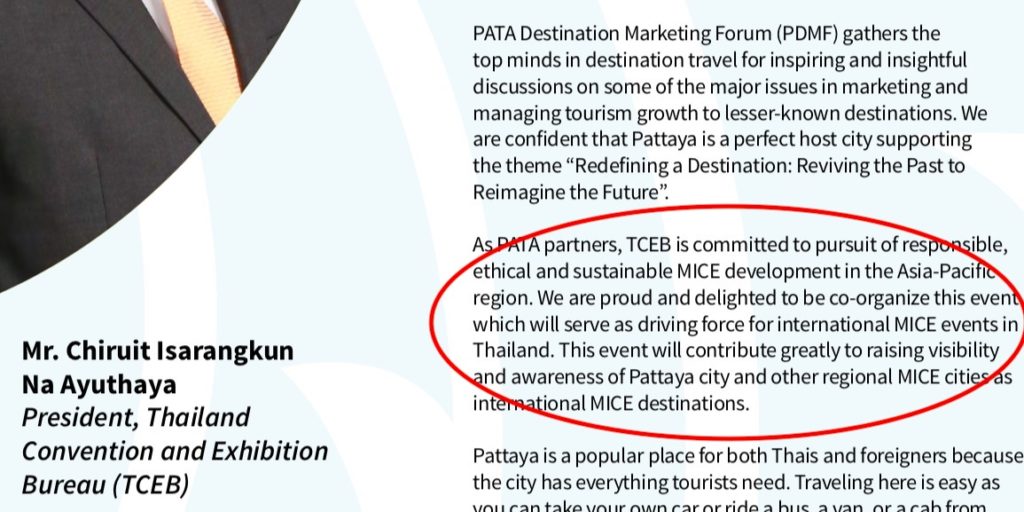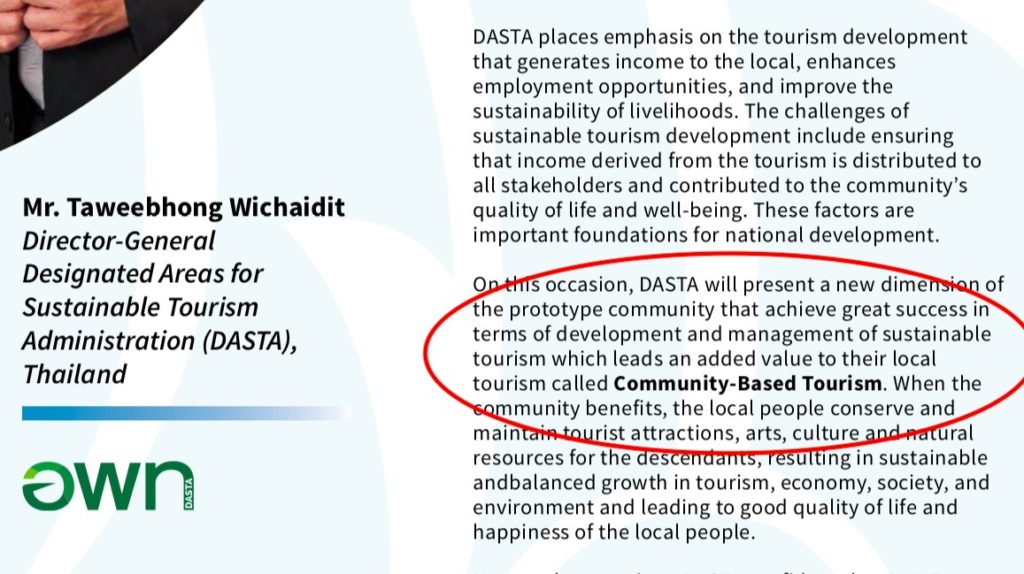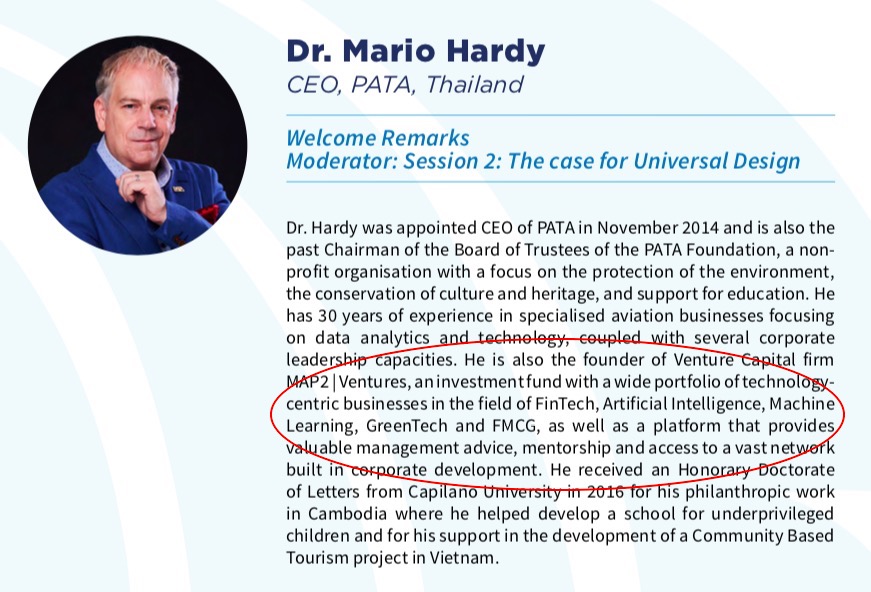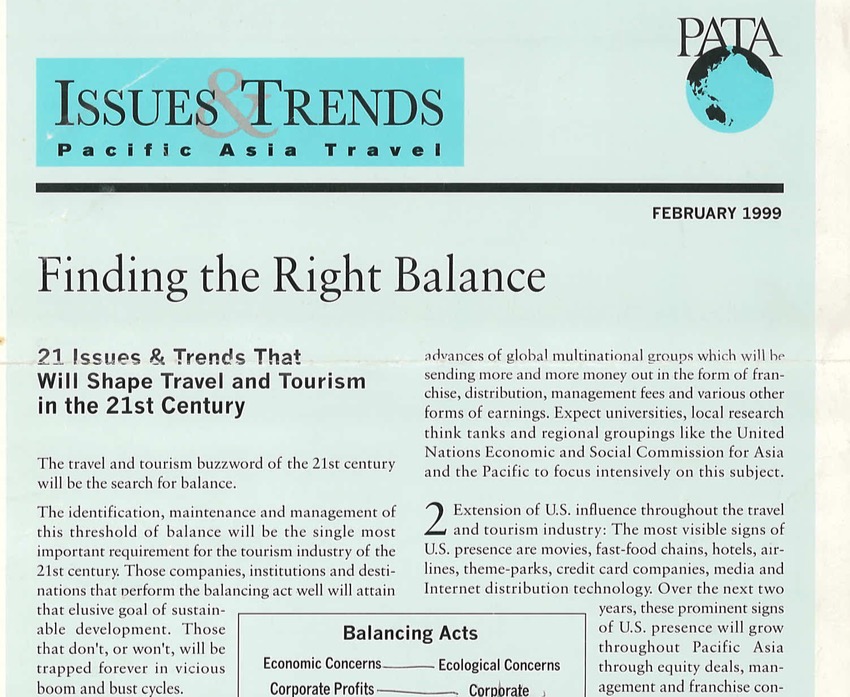
12 Dec, 2019
Destination Marketing Forum in Pattaya shows why PATA events are losing steam
Pattaya, Thailand — The PATA Destination Marketing Forum held in this, one of Asia’s historic beach resorts, between Nov 27-29 was sponsored and supported by the Tourism Authority of Thailand (TAT), the Thailand Exhibition and Convention Bureau (TCEB), Designated Areas for Sustainable Tourism Activity (DASTA) and Pattaya City. As all are government agencies, the entire event effectively was funded by the Thai taxpayer.
The theme was “Redefining a Destination: Reviving the Past to Reimagine the Future”. In line with that, what deliverables did the sponsors expect? This is what they said in their messages:




The event was FREE of registration cost. In his opening remarks at the press conference, PATA CEO Dr Mario Hardy said it was attended by 327 delegates from 26 destinations. This is how the PATA press release put it on December 3:

Here is the specific turnout as listed in the event directory:
Australia: 1
Bhutan 1
China 1
Chinese Taipei (Taiwan) 7
Guam 2
Hong Kong 1
India 4
Indonesia 2
Japan 1
Macao 1
Malaysia 11
Maldives 5
Myanmar 20
Nepal 5
Pakistan 3
Palau 7
Russia 1
Saudi Arabia 1
Singapore 9
Solomon islands 2
Spain 2
UK 3
USA 3
Vietnam 1
That is a total of 94 foreign delegates. The PATA region has tens of thousands of travel companies and enterprises, and only 94 foreign delegates showed up for a FREE event marketed as “two nonstop days of learning, discovery and community-building.”
A closer look will raise even more eyebrows: The three delegates from the USA and one from Japan were ALL speakers. The Singapore contingent included one speaker, 10-year-old Zara Khanna AND three members of her family. The Malaysian delegation included one speaker and six representatives of Sarawak, Malaysia, host of the next PDMF.
That means that the remaining delegates were all from Thailand. The directory listed 108 Thai delegates of whom 30 were TAT staff.
108 Thai + 94 foreign delegates = 202.
Who were the rest of the participants?
The directory listed 7 media, including this editor, 13 representatives of Pattaya City, 28 DASTA staff, 20 TCEB staff, 18 PATA staff, 8 more TAT personnel, one from the Pattaya Business & Tourism Association and four from Chonburi Provincial Administrative Organisation. That equals 99.
202 + 99 = 301.
A few last-minute registrations may have come in to stretch the announced total to 327.
So, of the total attendance, roughly 65-70% were Thais, including staff of the four sponsoring organisations and PATA.
Was that in line with the expectations of the sponsors? Did it meet their goals? Is PATA trying to pad the numbers?
Incidentally, the turnout at the 2018 PDMF in Khon Kaen was about the same: 290 delegates also from 26 destinations, mostly Thailand.
PROGRAMME CONTENT
“Content is King”, says the famous slogan of the tech-era. So, what did the PDMF 2019 deliver?
In return for their investment, all the sponsors got a speaking slot, along with PATA members. Like the 2018 PDMF, which included a speaker from Las Vegas, this year had a speaker from Austin, Texas. He talked about how a music festival there was contributing to visitor arrivals, jobs and economic growth.
Music festivals are nothing new in the Asia-Pacific. Their value is well known. The TAT and other travel industry organisations sponsor the annual International Festival of Dance and Music as well as the Hua Hin Jazz Festival. The former features quality performances such as dances, concerts and ballets spread out over two months, which prevents a rush and evens out the attendance. People fly in from around the region for these usually sold-out performances.
Another unique event is the Rainforest World Music Festival in Sarawak which combines music and sustainability.
So flying in Mr. Mike Shea, Chief Logistics Officer of South by Southwest (SXSW) from Austin did not contribute much in terms of “innovative thinking”. As SXSW is a PATA member, Mr. Shea got a nice trip to Thailand, subsidised by the Thai taxpayer.
Another speaker from the United States was Mr Al Merschen, Managing Partner, MMGY/Myriad, USA. According to the speakers profile, he helps travel & tourism clients with research, marketing, changing trends and the creative process. Also a PATA member, he had pride of place at the PDMF, moderating a session in the morning and delivering a keynote address in the afternoon.
Bangkok is crawling with branding gurus who could have delivered the same spiel at far less cost to the Thai taxpayer. One of Mr. Merschen’s core messages was the need for balance in managing destinations. He flashed up several slides, led by this:

In February 1999, a little over 20 years ago, this was the lead headline in the PATA publication Issues & Trends. Pls click on the image to download the full publication, and see who was editing it at the time.
So what exactly was Mr. Merschen bringing to the event that had not already been flagged by PATA 20 years ago?
Teaching the Thais about tourism branding and marketing is like carrying coals to Newcastle. The TAT’s Deputy Governor for Marketing Communications Mr. Tanes Petsuwan outlined Thailand’s tourism success story that has seen it generate 40 million annual visitors, thanks to some spectacular campaigns since the TAT’s founding in 1960. However, he said, “we Thais don’t like to boast as we are a humble people.”
Missing entirely from the programme was the history of Pattaya itself. Dr. Hardy referred to destinations dealing with the “less-tangible challenge of managing unwanted and long-standing perceptions of their destination.” Pattaya is one such destination, but there was nothing on how it has redefined itself from a sex-and-sin to family destination, even though it was perfectly in line with the PDMF theme of “Reviving the Past”.
One session focussed on inclusive travel. This, too, was first placed on the PATA agenda in May 2002 (click on the image to download the full publication):
The session on CBT dealt with sustainability and community-based projects. Again, nothing new. Both are regular fixtures on just about every major travel event, and have been for years.
The tours to Community-based and Royal Development Projects were pertinent. However, Thais mostly already know about them. As for the foreign delegates, they were at the PDMF to learn how to promote their own destinations, which makes it unlikely that their tours will generate any foreign visitors for the Thai projects.
Perhaps the only session of any distinction was that by the 10-year-old techno-entrepreneur Zara Khanna. She is the marketing front for a children’s travel website that is run behind the scenes by her parents and a professional team. She said her trip to Pattaya had given her a chance to check out the many family theme parks and attractions, which could be added to her popular website.
Certainly, for those who have not been to such events before, or young Thais who cannot afford to go abroad, the PDMF would have yielded some value. But whether it was worth the time and effort that went into it over the course of an entire year is debatable, as is the RoI for the Thai taxpayer.
It does not take much to see that PATA events are losing steam. Because many speaking slots have to be reserved for sponsors and PATA members seeking to advertise their services, the bulk of the subject matter sticks to the traditional comfort zones. And as Mr. Hardy and the PATA Director of Communications Mr. Paul Pruangkarn also moderate some of the panel sessions, their bland, pre-packaged questions stick to the party-line.
Interaction with the audience is gone. Questions from the floor are now routed via the automated sli.do system which means they are “reviewed” before being cleared. If the PATA reviewer gives the question a thumbs-down, they do not appear on the screen. I say that from experience. Sounds like censorship, yes?
Mr. Hardy is also stating in public that he is juggling two jobs.

Managing all that must take up a good deal of time. So, which one is his real full-time job?
Conclusion
As I have said in previous articles, PATA events are becoming clubs of mutual back-thumpers preaching to the converted, totally devoid of critical analysis, democratic debate and dissent.
Perhaps most puzzling is that the PATA line-up of futurists, visionaries and thought-leaders still don’t get it. The press releases continue to present every event sunny-side-up, and the PATA fraternity laps it all up unquestioningly. Anyone daring to challenge the official version comes under fire. Again, I speak from experience. I once had a open channel of WhatsApp communication with Dr Hardy. No more.
This intellectual stagnation does not augur well for PATA’s long-term future. The business model of its events is not sustainable. Under the long-standing model, which is still in place, the local hosts cover all the costs while PATA takes all the proceeds. In the old days, PATA had the prestige and membership reach to bring value and marketing exposure to the host destination. That value-proposition is wearing thin, which means the business model will eventually fall by the wayside.
In 2020, the baton will pass on to Malaysia which will host two PATA events – the Adventure Travel Mart and Conference in Kota Kinabalu, Sabah, in February, and the PDMF in Sarawak in November. The bills will be footed by the Malaysian taxpayer and perhaps some private sector sponsors. How the Malaysians calculate the RoI remains to be seen.





Liked this article? Share it!